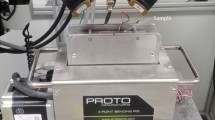Abstract
The paper presents the general theory of stresses and displacements in a two-dimensional cross-anisotropic disc subjected to two diametrically opposite loads. Such an indirect tensile test is often used for paving materials and this theory provides the necessary background for the determination of the stiffness, Poisson's ratio, and the anisotropy ratio on a single sample. Two successive tests along two perpendicular diameters (directions of anisotropy) are sufficient for measuring the corresponding vertical displacements and one horizontal displacement.
Resume
Dans l'essai de compression diamétrale une éprouvette cylindrique est chargée selon deux génératrices opposées ce qui induit des contraintes de traction dans la direction perpendiculaire à la charge. Cet essai, de par sa simplicité et son applicabilité à des éprouvettes directement carottées dans la chaussée, est souvent utilisé pour évaluer les caractéristiques mécaniques des matériaux routiers enrobés aux liants hydrocarbonés.
Jusqu'à présent, les calculs théoriques permettant l'exploitation de tels essais reposaient tous sur l'hypothèse d'un matériau parfaitement isotrope, ce qui n'est pas nécessairement le cas. Le compactage, par un effet d'orientation préférentielle des granulats, mais aussi les phénomènes de fissuration, induisent un certain degré d'anisotropie qu'il est intéressant de mesurer pour mieux caractériser le matériau et suivre son évolution dans le temps.
Cet article développe la théorie générale permettant le calcul des contraintes, déformations et déplacements générés dans un disque bi-dimensionnel et anisotrope soumis à deux charges ponctuelles diamétralement opposées. Les équations pratiques permettant la détermination des modules de rigidité, coefficients de Poisson et d'un ratio d'anisotropie sont ensuites explicitées. Il suffit pour cela de tester l'éprouvette selon les deux directions perpendiculaires d'anisotropie et de mesurer les déplacements verticaux correspondants ainsi qu'au moins un déplacement horizontal.
Similar content being viewed by others
Abbreviations
- A, B :
-
Constants depending on boundary conditions
- D :
-
Diameter of a disc
- E :
-
Young's modulus
- G :
-
Shear modulus
- m :
-
Anisotropy ratio
- P,P 1,P 2 :
-
Single orthogonal loads
- R, r :
-
Radial polar coordinates
- s :
-
Anisotropy index
- t :
-
Integration parameter
- x, z :
-
Cartesian coordinates
- α, θ:
-
Angular polar coordinates
- γ:
-
Shear strain component
- ε:
-
Normal strain component
- μ:
-
Poisson's ratio
- σ:
-
Normal stress component
- τ:
-
Shear stress component
- ϕ:
-
Stress function
References
Barden, L., ‘Stresses and displacements in a cross-anisotropic soil’,Geotechnique No. 13 (1963) 198–210.
Van Cauwelaert, F., ‘Coefficients of deformation of an anisotropic body’,ASCE J. Engng Mech. Div. (October 1977) 823.
Idem Van Cauwelaert, F., ‘Coefficients of deformation of an anisotropic body’,ibid. ASCE J. Engng Mech. Div. (October 1977) 835.
Dahan, M., Habib, P. and Predeleanu, M., ‘Détermination des coefficients élastiques d'un massif anisotrope par poinçonnement et ancrage’,Rev. Fr. Géotech. No. 16 (1981).
Michell, J. H., ‘The stress distribution in an aleotropic solid with infinite boundary plane’,Proc. London Math. Soc. 32 (1900) 44.
—Idem 34 (1901) 134.
Timoshenko, S. P., ‘Theory of Elasticity’ (McGraw-Hill, New York, 1970).
Author information
Authors and Affiliations
Rights and permissions
About this article
Cite this article
Van Cauwelaert, F., Eckmann, B. Indirect tensile test applied to anisotropic materials. Materials and Structures 27, 54–60 (1994). https://doi.org/10.1007/BF02472820
Issue Date:
DOI: https://doi.org/10.1007/BF02472820




